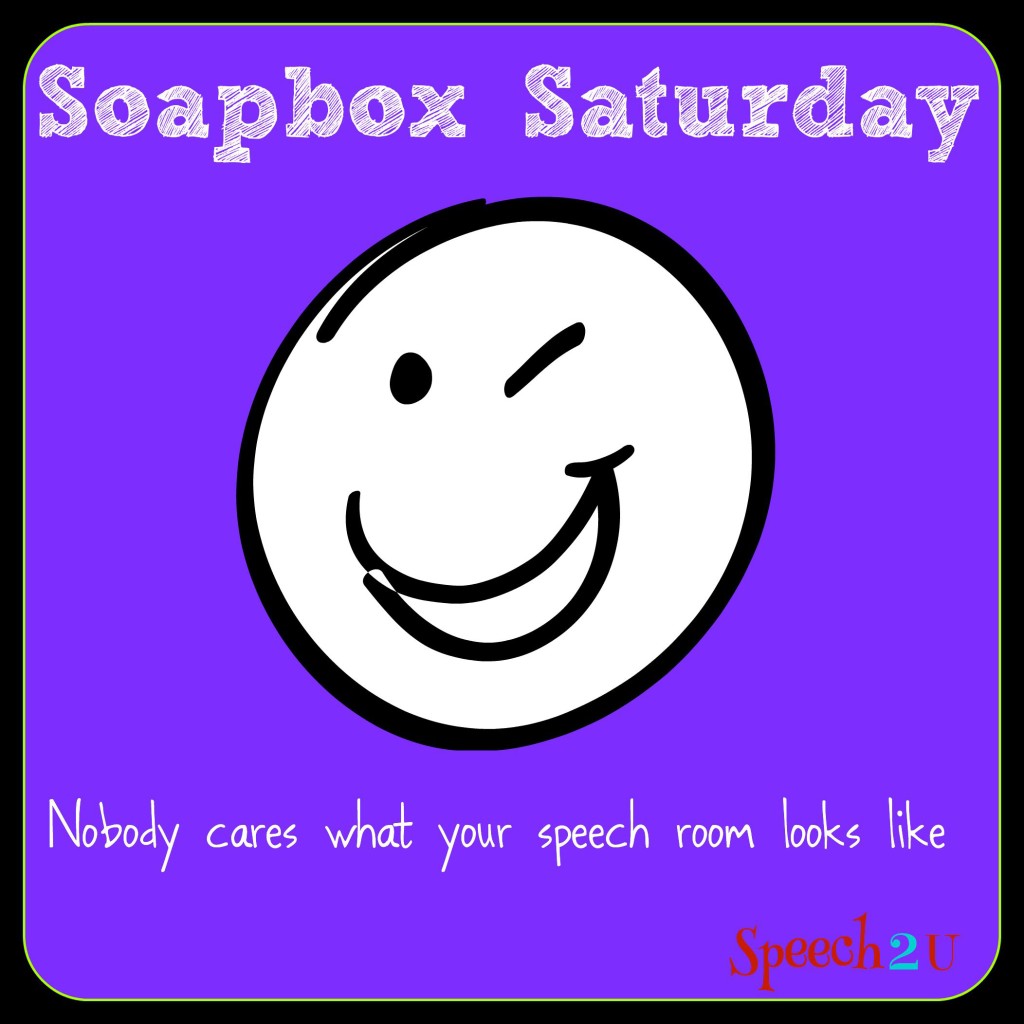Actually, that’s not true-I was just trying to get your attention. I love looking at pictures of organized and well designed treatment rooms-I’m in awe of some of your speech spaces.
 This is the time of year when you see pictures of amazing and potentially disheartening speech spaces.
This is the time of year when you see pictures of amazing and potentially disheartening speech spaces.
It’s easy to think, “How am I suppose to get these students take me seriously when I am teaching them in the closet/hallway/bathroom?”
Luckily, the room you are in doesn’t matter. What matters is you-if you can reach your students, motivate them and teach them. Your students will make progress-and they will look forward to coming to speech.
You can do it in a fancy Pinterest decorated speech room…and you can do it in a broom closet next to toilet paper. Plus you make jokes about handing out free toilet paper.
So what does it mean when you get a small or really crappy speech room? Does it really mean that your principal doesn’t appreciate speech therapists and the role you play in the school? When you get a bad speech therapy space, do you think about what class or teacher or instructor should have that space? We generally treat small groups of children who spend about 20-30 minutes in the room before we get our next set of students. We don’t need desks for our students and can be pretty portable with our materials. When space is at a premium, I can sometimes see how it makes sense for me to end up in a less than desirable treatment space.
Of course, I think it’s best when our treatment spaces are actual classrooms or small rooms. I spent a year treating in an actual supply closet-people were always surprised when they saw me in there as they were getting paper products. But if you are not in the ideal space, it’s important to remember that we set the mood and inspiration for our students-not our physical space.
It’s why you never hear about a student who wrote a letter to thank a particular classroom for it’s cute chevron patterns and matching desk decor that helped them to understand math. They wrote the letter to the teacher.


I can vouch for the fact that the students don’t care. This year I was given a full classroom and I was previously in the storage room of the mod-severe classroom (that was cleared out). I was SO excited to have a full classroom and fully decorated it, covering the ugly cabinets with chevron removable wallpaper – the works. The only comments I’ve received from students is that I’ve moved or questions about why I moved. I asked one student if he liked my new room and he said “a little bit, but not a little bit because I don’t know where the Legos are.” Haha, and there you have it.
Thanks for this post! I usually get the closet or hallway and I am always so envious of the speech rooms I see on Pinterest! You are right, my students probably don’t even notice.
Totally agree and what about SLPs who have MULTIPLE rooms!!! Who has the time, money and resources to decorate more than one room?!!!
I too have taught in a closet, not to mention the cafeteria during non lunch periods and sometimes during if working on social skills!. When I was at a local middle school and high school I had the art room which I shared I day/week with the OT, a music/practice room and the common area. I have a small room which I decorate with some inspirational posters, rules for speech and maybe if I remember I will decorate the bulletin board and change it seasonally! The kids don’t care- most of them don’t notice the décor they are more focused on the activities.
I’ve worked in less than optimal spaces as well. I agree with your point that it usually does not reflect on our professionalism or our value to the school. For ideas on how to treat all over the school, take a peek at the blog hop starting this week at Activity Tailor’s blog! Great post!
Wonderful points! I have done speech language therapy in a storage closet with 3 others, in the wings off the stage of an auditorium, in a bus, in a camper, in a music room, in a home-ec room, in the hallway, etc. It was never about the room and always about the therapy.